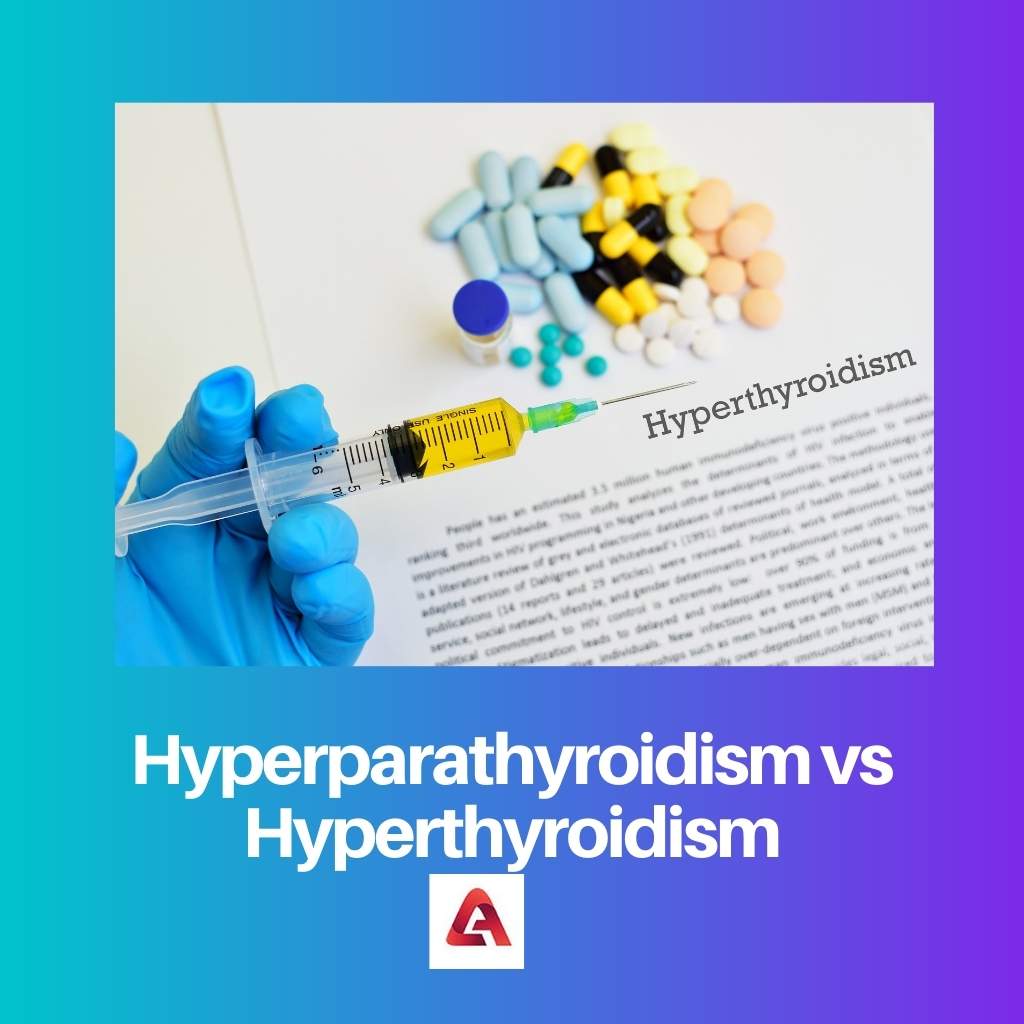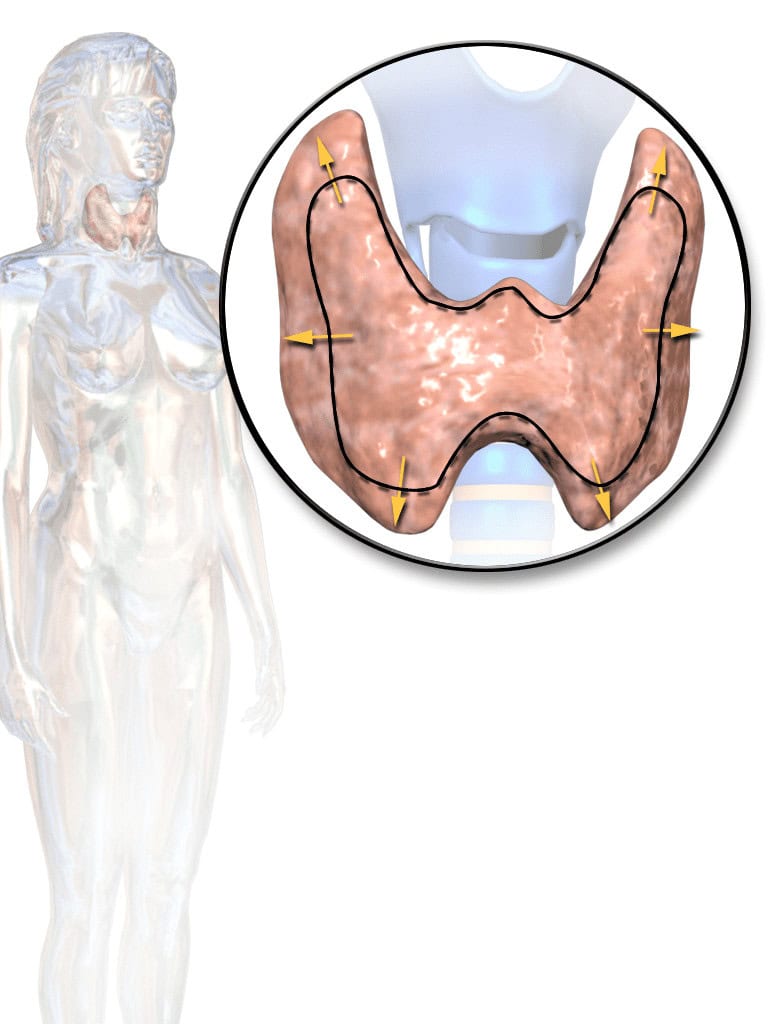Our body has many organs and glands functioning together. All of them work in coordination with each other to keep their eyes healthy.
But, sometimes, some organs or glands start functioning in an abnormal manner resulting in diseases.
At present, diseases are wreaking havoc in most households. Several illnesses are found dominant in a particular region.
Some illnesses that affect human health these days are hyperparathyroidism and hyperthyroidism. These two are associated with over-secretion in the parathyroid and thyroid glands.
These two can affect people at any age and cause discomfort along with several visible symptoms.
Key Takeaways
- Hyperparathyroidism is a condition caused by overactive parathyroid glands, resulting in excessive secretion of parathyroid hormone.
- Hyperthyroidism is characterized by an overactive thyroid gland, producing excessive amounts of thyroid hormones.
- Both conditions can lead to various symptoms, but hyperparathyroidism primarily affects calcium levels in the body, while hyperthyroidism influences metabolism and energy levels.
Hyperparathyroidism vs Hyperthyroidism
Hyperparathyroidism is a condition in which the parathyroid glands produce too much parathyroid hormone (PTH), which regulates calcium levels in the body. Hyperthyroidism is a condition in which the thyroid gland produces too much thyroid hormone, which regulates metabolism in the body. This can be caused by a variety of factors.

Hyperparathyroidism means an excessive secretion from the parathyroid gland. The hormones of the parathyroid glands are called PTH.
And these secretions help to balance the level of calcium, as well as that of phosphorus, in our body. In this disease, no external changes are visible.
In addition to that, a quick medical checkup is necessary if any of these symptoms are visible.
Hyperthyroidism, as the name says, means excessive secretions of hormones from the thyroid glands. Thyroid glands are the ones present near the neck of human beings.
The secretion of these glands includes the thyroid hormones. These hormones regulate the number of calories used up by our body.
When the secretion of these hormones is in excess, the condition of hyperthyroidism arises. Several symptoms relating to this condition are also detected.
Medications are available for this.
Comparison Table
| Parameters of Comparison | Hyperparathyroidism | Hyperthyroidism |
|---|---|---|
| Glands involved | This is caused by the over secretion of excess secretion of the parathyroid gland. | It is caused by the excessive secretion of hormones from the thyroid glands. |
| The original function of glands | PTH glands help to maintain the levels of calcium and phosphorus in our body. | They maintain the burn of calories in our bodies. |
| Symptoms | Symptoms include nephrolithiasis, renal insufficiency, negative bone balance, rhythm disorder in the heart, kidney stones. | Symptoms include the increased volume of the thyroid gland, water loss, loss of appetite, diarrhea, menstrual problems. |
| External conditions | No visible swelling can be seen. | The thyroid gland swells up and it is visible externally. |
| Aftereffect of treatment | No, after effects are seen. | Hyperparathyroidism might occur after treatment. |
What is Hyperparathyroidism?
“Hyper” means large amounts of something. Hence, the term “hyperparathyroidism” means a large quantity of secretion of hormones of the parathyroid gland, which is much more than the appropriate amount.
The hormones of the parathyroid glands are called parathyroid hormones. The secretions of these glands help to stabilize the amount of calcium and phosphorus in the human body.
An excessive amount of secretion of parathyroid hormone causes the calcium to pile up at certain places. It causes symptoms such as renal insufficiency and nephrolithiasis in the kidney.
These are the results of the accumulation of calcium in the body and the abnormal functioning of the kidney.
The presence of stones in the kidney, an increase in blood pressure, and the unrhythmic beating of the person’s heart all of these are all indications and symptoms.
At present, many tests are available to confirm whether a person has this disease or not. It s because no physical, visible symptoms are present as opposed to hyperthyroidism.
The tests which measure the level of vitamin D are the chief tests. If the amount of vitamins is low in the body, it can detect hyperparathyroidism.
There are other tests as well. If significant amounts of calcium and parathyroid hormones are detected after a blood test, one can confirm that the person is suffering from the disease.
Urine tests and ultrasound are also helpful to see if stones are present in the kidney and can determine the presence of this disease.

What is Hyperthyroidism?
Hyperthyroidism refers to the excessive amount of hormonal secretions from the thyroid glands. Thyroid glands, which are present inside, near the throat of human beings and are lobular structures, secret the thyroid hormones.
These hormones control the portion of calories used up by our body.
When these secretions are in large quantities, the situation of hyperthyroidism arises. Many people have a disease called Graves’ disease.
People who have Graves and a noticeable swell at the lower part of their neck can be confirmed to have hyperthyroidism.
As the function of these glands is to control the number of calories burnt in our body, an excess secretion would require more calories must be burnt out. And this leads to weight loss.
Another problem associated with it is Grave’s disease which causes eye problems. On the observation of symptoms of hyperthyroidism, we should get it checked.
The sooner the checks are done, the more the chances of early recovery.
Symptoms include a bulge or swelling at the bottom part of the neck (thyroid gland swells), water loss from the body, lack of appetite, diarrhoea in some cases, menstrual issues in women, etc.
The medication for this disease includes Anti thyroid medicines and radioactive iodine (also known as beta-blockers). Women are more at risk of hyperthyroidism than males.
If detected quickly, it is curable within months.

Main Differences Between Hyperparathyroidism and Hyperthyroidism
- In hyperparathyroidism, the number of hormones secreted by the parathyroid glands is much more than usual. However, in hyperparathyroidism, the secretions from the thyroid glands exceed the usual amount.
- In hyperparathyroidism, the original function of the parathyroid glands is to balance the level of Ca (calcium) and P (phosphorus). However, thyroid hormones control the number of calories used up by our body.
- The symptoms of hyperparathyroidism include renal insufficiency and negative bone balance. In some cases, the heart doesn’t beat rhythmically, and kidney stones are also an indication. However, symptoms of hyperthyroidism include water loss, loss of appetite, diarrhoea, and menstrual problems.
- In hyperparathyroidism, there is no external symptom. In hyperthyroidism, there are externally noticeable symptoms such as Graves and swelling of the neck.
- With proper treatment, hyperparathyroidism doesn’t have any after-effects. But if hyperparathyroidism is treated, it may again lead to hyperparathyroidism.

- https://onlinelibrary.wiley.com/doi/abs/10.1111/j.0954-6820.1978.tb08406.x
- https://link.springer.com/article/10.1007/s004230050245

I appreciate the explanation about the conditions and the glands involved. It’s important to understand how hyperparathyroidism and hyperthyroidism affect our body and how they differ from each other.
Absolutely, Scott Andy. We need to be aware of these conditions and the impact they have on our health.
The detailed explanation of the symptoms and diagnosis procedures of hyperparathyroidism and hyperthyroidism is enlightening. It’s crucial to know what to look out for and how these conditions are diagnosed.
Absolutely, Bradley Phillips. Understanding the symptoms and diagnosis methods is an integral part of managing these health issues.
I couldn’t agree more. The article has provided valuable insights, which are essential to be aware of.
The article does a fantastic job of explaining hyperparathyroidism and hyperthyroidism. The information is thorough and helps readers understand the conditions more clearly.
I share the same sentiment. It’s essential to have accurate and comprehensive information about these conditions, and the article has delivered that effectively.
I couldn’t agree more, Jackson68. The level of detail and clarity provided in the content is exceptional.
The detailed insights about the symptoms and diagnosis of hyperparathyroidism and hyperthyroidism are valuable. This information empowers readers to recognize and address potential health concerns effectively.
Indeed, Iward. Having a clear understanding of the symptoms and diagnostic procedures equips individuals with the knowledge to prioritize their health.
The detailed comparison between hyperparathyroidism and hyperthyroidism is exceptionally informative. It’s beneficial to have a comprehensive understanding of the differences between the two conditions.
Absolutely, Brown Bradley. The article has effectively outlined the variations between hyperparathyroidism and hyperthyroidism, which is extremely beneficial for readers.
The in-depth explanation of hyperparathyroidism and hyperthyroidism is commendable. It’s informative and presents the information in an understandable manner.
Absolutely, the article has successfully presented complex medical information in an accessible format, which is highly appreciated.
I agree, Hollie Evans. It’s crucial that readers can comprehend the content. This article has achieved that remarkably well.
The article’s comprehensive explanations of hyperparathyroidism and hyperthyroidism are incredibly enlightening. It aids in educating readers about these medical conditions.
Completely agree, Francesca65. The depth of information provided enables readers to have a well-rounded understanding of these conditions.
I echo the same sentiment. Such extensive insights contribute to raising awareness and understanding about hyperparathyroidism and hyperthyroidism.
The comparison table provides a clear overview of the differences between hyperparathyroidism and hyperthyroidism. It’s beneficial to have all the information in one place.
I completely agree, Linda82. This article has done a great job in explaining and contrasting the two conditions.
The explanation of the symptoms and diagnosis procedures of hyperparathyroidism and hyperthyroidism is highly informative. It’s crucial to be well-informed about these health issues.
Indeed, Vcollins, understanding symptoms and diagnostic methods aids in early detection and management of these conditions.
The article presents a clear and concise overview of hyperparathyroidism and hyperthyroidism. This level of detail is crucial for readers to understand the conditions better.
Absolutely, White Mark. The information provided is detailed yet comprehensible, which is highly beneficial for readers seeking to enhance their understanding.
I completely agree. In-depth explanations help individuals gain a deeper comprehension of complex health conditions.